#battle of monte cassino
Text
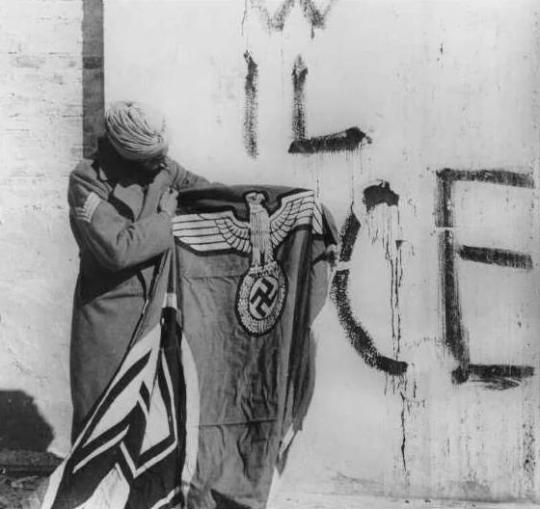
Sikh soldier of the Indian Red Eagle division showing a captured German flag after taking Monte Cassino, Italy. May, 1944
54 notes
·
View notes
Text

Soldats américains sur un chasseur de chars Marder III détruit par les troupes françaises – Bataille de Monte Cassino – Campagne d'Italie – Esperia – Italie – 17 mai 1944
#WWII#campagne d'Italie#italian campaign#bataille de monte cassino#battle of monte cassino#la ligne Gustave#winter line#char#tanks#chasseur de chars#tank destroyer#marder III#esperia#italie#italy#17/05/1944#05/1944#1944
47 notes
·
View notes
Text


🐻🇵🇱
#wojtek#battle of monte cassino#wojtek the bear#ww2#wwii#poland#polska#poland independence day#poland's national independence day#polish independence day#independence day#święto niepodległości#world war ii#world war 2#corporal wojtek#polish army#military history#military#edinburgh#bears
132 notes
·
View notes
Text
1944 – Battle of Monte Cassino ends
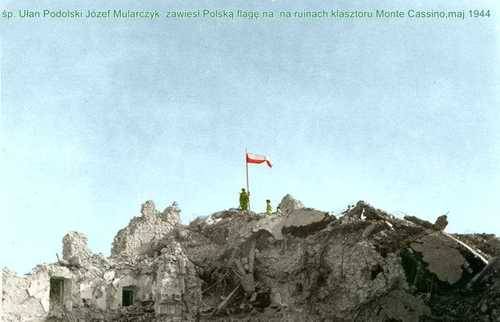


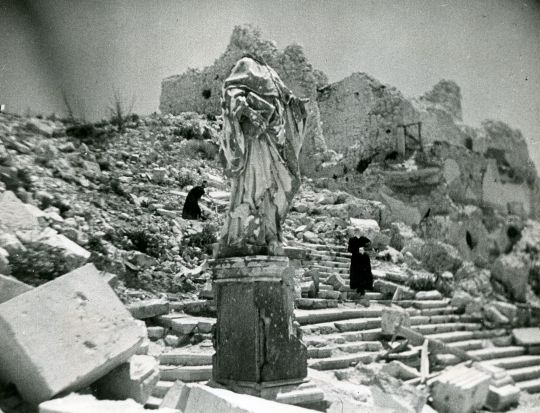
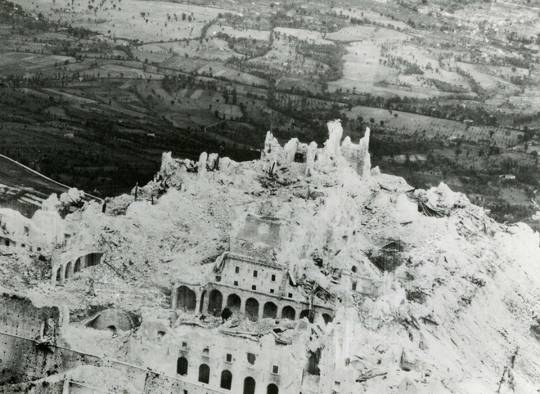

Conclusion after seven days of the fourth battle as German paratroopers evacuate Monte Cassino.
#May.18.1944#Battle of Monte Cassino#German paratroopers#12th Podolian Uhlan Regiment#Italian Campaign#World War II#history today
0 notes
Text
Remember the Battle of Monte Cassino: January–May 1944.

After Anzio, the Germans occupied defensive positions known as the Winter Line, consisting of bunkers, barbed wire, minefields, and ditches. The four successive Allied assaults on these positions became known as the Battle of Monte Cassino.
The fight resembled a WWI battle, with artillery bombardments preceding bloody infantry assaults on fixed positions. Success was bought at the cost of more than 50,000 casualties on the Allied side. Today, the battle is mainly remembered for the destruction of the abbey of Monte Cassino (which was sheltering civilians) by more than 100 B-17 Flying Fortresses, when the Allies mistakenly believed the abbey to be a German artillery observation position.
[No Need to Imagine: Here’s How WWI Soldiers Actually Dressed]
#second world war#chronology#year 1944#artillery bombardments#infantry assaults#abbey of Monte Cassino#the allies#german army#Battle of Monte Cassino#Winter line#bunkers#barbed wire#minefields
0 notes
Text
The Heavy Cost Of The Battle Of Monte Cassino | Monte Cassino | Timeline
Welcome to our pastoral blog post where we delve into the intriguing and captivating topics discussed in the YouTube video, “The Heavy Cost Of The Battle Of Monte Cassino | Monte Cassino | Timeline”. This video takes us back to a time during the Second World War, where two opposing army units, one British and one German, prepare to engage in one of the largest and most contentious battles of the…
View On WordPress
1 note
·
View note
Text
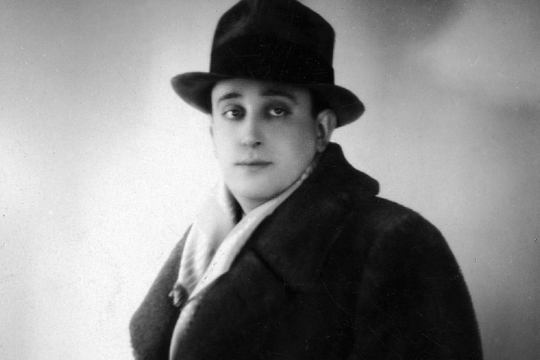
Michał Waszyński (Mosze Waks) (deceased)
Gender: Male
Sexuality: Gay
DOB: 29 September 1904
DOD: 20 February 1965
Ethnicity: Ashkenazi Jewish
Nationality: Ukrainian / Polish
Occupation: Director, producer, veteran
Note 1: In the 1930s Waszyński became the most prolific film director in Poland, directing 37 of the 147 films made in Poland in that decade, or one out of four.
Note 2: During the war he was relocated to Persia (Iran), and later as a soldier of the 2nd Corps of the Polish Army to Egypt and Italy. As a member of the army film unit, he filmed the Battle of Monte Cassino,
#Michał Waszyński#Michal Waszynski#Mosze Waks#lgbt history#lgbtq#male#gay#1904#rip#historical#jewish#ashkenazi jewish#ukrainian#polish#director#producer#veteran#popular#popular post
240 notes
·
View notes
Text
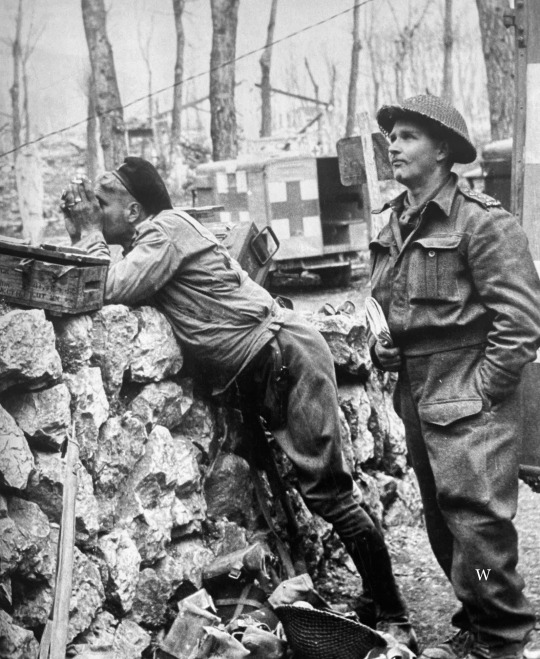
New Zealand medics try to watch the battle as they await the wounded - Monte Cassino - March 1944
#world war two#1940s#worldwar2photos#history#ww2#wwii#ww2 history#wwii era#world war 2#ww2history#new zealand army#new zealander#monte cassino#Italy#army medic#medic#1944
181 notes
·
View notes
Text

Sir Tim Laurence at the 75th Commemoration of the Battle of Monte Cassino, Italy, on 16 May 2019.
#LOOK AT HIM#SWEET BABY BOY#HE'S SO HANDSOME#HIS DIMPLES#AND ROSY CHEEKS 🥹😭#MY BEAUTIFUL OLD MAN#ALSO THE STRESS HAT#LMAO#we love to see it#tim laurence#timothy laurence
29 notes
·
View notes
Text
I'm sure that someone has probably already shared this information but since I've just spent a good hour researching for my own stupid needs these are the medals that Havers has:
Top bar: Military Cross, 1939 - 1945 Star, Africa Star
Bottom bar: Italy Star, France and Germany Star, Defence Medal, War Medal 1939 - 1945
So I would guess that the Military Cross was awarded for Haver's actions that resulted him getting his injury, which I want to presume was from when he was serving in Africa. An injury like that would have seen him sent back to Britain to recover. But he also has the Italy Star which was for service in the Italian Campaign from 1943 to 1945, but since he also has the France and Germany Star, which was specifically for service within Northwestern Europe between June 1944 and VE Day, he would have only been involved in the first year of the Italian Campaign but this could have included the Battle of Monte Cassino. I only think that's significant as the Italian Campaign and that battle in particular are known for being long and hard fought with high casualties and significant acts of bravery, so I would place Haver's promotion to Major around that time and possibly the Military Cross. But not when he got his injury because there wouldn't be enough time between Italy, returning home for recovery and the Northwestern Europe service. I still think it makes more sense for the MC to have been for Africa, but could have been either.
So with that information this is a theorised service record:
June 1940 - 1943 North Africa
- Promotion to Captain by 1941.
- Injury (and resulting MC for gallantry) 1942.
1942/1943 - Home
- Returned to Britain for recovery/convalescence.
1943 to June 1944 - Italian Campaign
- Promotion to Major by June 1944.
- Possible involvement in the Battle of Monte Cassino.
June 1944 to VE Day - Northwesten Europe
Ignore or use this information however you like - I just like to research this sort of thing because I'm a big nerd xD
#bbc ghosts#lieutenant havers#anthony havers#I’m just a sad little history nerd who wishes they had found this fandom sooner
40 notes
·
View notes
Text
First request fulfilled and it's not even lunchtime! @Captainsbestgal request I capture Wojtek.
For those not in the know, this statue in the heart of Edinburgh honours a bear that served in the Polish military during World War II.
Wojtek the Soldier Bear Memorial
Wojtek's story began in Iran in 1943, when a group of Polish soldiers adopted an orphaned brown bear cub.
The soldiers were members of the Polish 2nd Corps, a military unit consisting of Polish political prisoners released from Soviet gulags by Stalin after the Nazi invasion of the USSR. As they left their places of internment and moved west to join the fight against the Axis, the bear cub they adopted quickly became a popular and important boost to morale. By the time the 2nd Corps reached Egypt and prepared to transfer to the Italian war zone, the now-fully-grown bear had learned to salute and carry supplies and enjoyed drinking beer, eating cigarettes, wrestling with the soldiers, and swimming whenever he had the chance.
Going into active combat, however, presented a problem, as soldiers were forbidden from bringing pets into theaters of operation (and by this point the bear had, by all accounts, thoroughly imprinted on the soldiers who had raised him). Thus, the bear was enlisted into the 22nd Artillery Transport Company of the 2nd Corps, and accordingly given an official number, the rank of private, and the name Wojtek—a common Polish name meaning “joyful warrior.”
Private Wojtek served for the remainder of the war, most notably during the Battle of Monte Cassino, in which he helped to move crates of ammunition—with two hands, while standing upright, because he thought he was just another soldier.The Battle of Monte Cassino opened the road to Rome for the Allies. Wojtek was so popular among his fellow soldiers that a graphic of a bear carrying an artillery shell became the official emblem of the 22nd Company.
After the war ended, Wojtek’s company was transferred to southeastern Scotland. Having experienced Soviet repression first-hand, most of the soldiers refused to return to Poland after the Iron Curtain fell, and chose instead to remain in Scotland in exile. Once the 22nd Company was demobilized in 1947, Wojtek was moved to the Edinburgh Zoo. His old Polish brothers-in-arms visited him regularly, as did the scores of new admirers he gained during the remainder of his life. He died in 1963, at the age of 22.
Unveiled on November 7, 2015, the bronze statue in Princes Street Gardens in Edinburgh commemorates not only the much-beloved bear, but also the Polish soldiers who bravely shared the same harrowing journey and ultimately found refuge in Scotland. The soldier is in short sleeves so I put my scarf on him to warm him up a wee bit.
Commissioned by the Wojtek Memorial Trust, the project likewise pays tribute to the resultant close ties between Scotland and Poland.
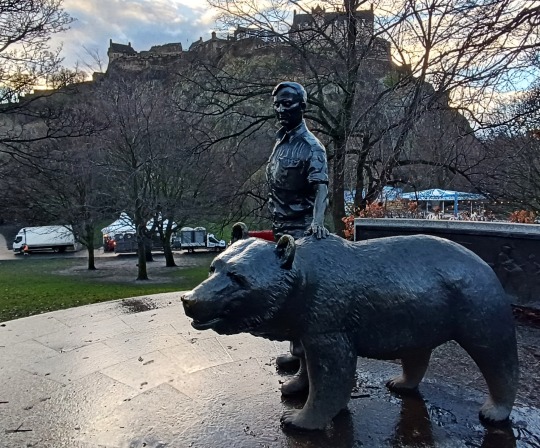

38 notes
·
View notes
Text

A 6-pounder antitank gun manned by Guardsmen of the 1st Guards/Mechanised Brigade in action in a ruined house overlooking a road near Cassino, Italy. 11th-18th May 1944.
54 notes
·
View notes
Text

Bataille de Monte Cassino – Campagne d'Italie – Presenzano – Italie – Janvier 1944
#WWII#campagne d'italie#italian campaign#bataille de monte cassino#battle of monte cassino#la ligne Gustave#winter line#ambulance#presenzano#italie#italy#01/1944#1944
8 notes
·
View notes
Note
What was Captain America's attitude to German soldiers in WWII? Obviously he despised anyone who was actually a Nazi, but what about just ordinary soldiers?
That's a very good question!
Because of who he was, Captain America had an unusally broad experience of WWII compared to other soldiers in the U.S Army.
As a super-soldier and leader of the Invaders, he spearheaded the Allied effort against super-scientists like Zemo and Zola, HYDRA agents like Strucker and the Red Skull, and Nazi super-soldiers like Master Man, Baron Blood, Warrior Woman, U-Man, etc. Moreover, the Marvel Universe version of WWII significantly differs from real-world history in that both American and Russian super-soldiers were involved in the Battle for Berlin that ended with the Human Torch turning his fire on Hitler himself.

As a special forces officer, he served in conventional front-line and behind-the-lines operations (often with the Howling Commandos) in the European theater from Anzio and Monte Cassino to the Normandy landings, Arnheim, the Battle of the Bulge, the crossing of the Rhine, and the liberation of Diebenwald; in the African theater from Tunisia to Wakanda; and even in the Pacific Theater, although there he was mostly doing intelligence and special operations work rather than front-line service.
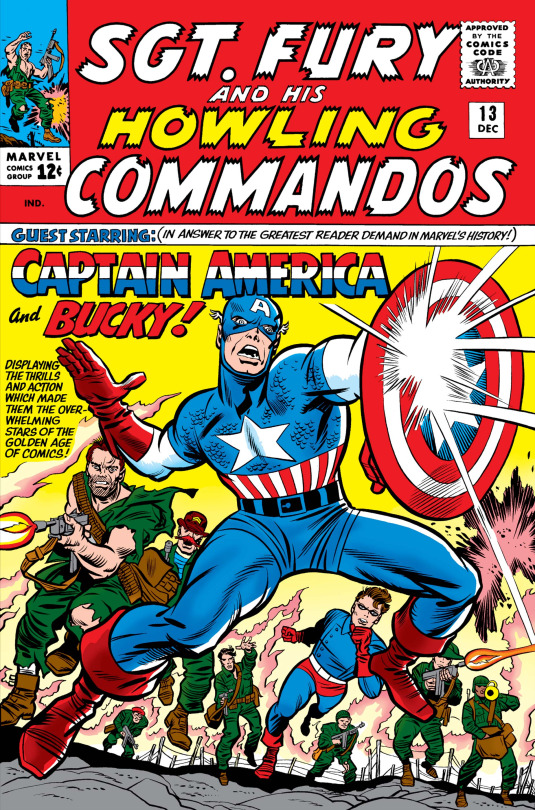
As the symbol of the American war effort, however, Rogers was dispatched to fronts that American soldiers were usually not engaged in, whether that's fighting with the French Resistance, or being dispatched to the Eastern Front to demonstrate America's commitment to the USSR and counter Nazi super-science and super-soldiers sent to break the stalemate at Stalingrad.

Between his broad wartime experience and his experience with HYDRA sleeper agents after the war, I don't think Steve Rogers is much of a believer in the "myth of the clean Wehrmacht."
At the same time, he's also not a believer that there was something inherent about German culture that made it vulnerable to fascism and Nazism - indeed, Cap is very insistent that fascism can happen anywhere and must be fought everywhere:

30 notes
·
View notes
Text

A CANTICLE FOR LEIBOWITZ by Walter M. Miller. (New York: Lippincot, 1959) Cover art by M. Glasser. First edition was issued with a paper banner from publisher.
‘A Canticle for Leibowitz is a post-apocalyptic social science fiction novel by American writer Walter M. Miller Jr., first published in 1959. Set in a Catholic monastery in the desert of the southwestern United States after a devastating nuclear war, the book spans thousands of years as civilization rebuilds itself. The monks of the Albertian Order of Leibowitz preserve the surviving remnants of man's scientific knowledge until the world is again ready for it.
The novel is an amalgamation of three short stories Miller had originally published in The Magazine of Fantasy & Science Fiction [April 1955-February 1957], inspired by the author's participation in the bombing of a monastery at the Battle of Monte Cassino during World War II. The book is considered one of the classics of science fiction and has never been out of print. Appealing to mainstream and genre critics and readers alike, it won the 1961 Hugo Award for best science fiction novel, and often appears on "best of" lists. It has been recognized three times with Locus Poll Awards for best all-time science fiction novel. Its themes of religion, recurrence, and church versus state have generated a significant body of scholarly research.’
source [NPR radio drama]
source [paperback edition]
#book blog#books#books books books#book cover#science fiction#walter m. miller#post apocalyptic#a canticle for leibowitz#hugo awards#locus awards#radio drama#religon#misremembrance#book collecting
15 notes
·
View notes
Text
Valentine Ration Book; a Valentine at the battle of Monte Cassino
instagram
2 notes
·
View notes